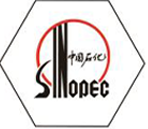
Dec . 06, 2024 12:31
Back to list
high pressure regulators
Understanding High Pressure Regulators An Essential Component in Fluid Control Systems
High pressure regulators are critical devices used in various industrial applications to manage and maintain desired pressure levels in gas or liquid systems. These components are essential for ensuring safety, efficiency, and optimal performance in environments where high pressure is common, such as in oil and gas, chemical processing, and manufacturing industries.
What are High Pressure Regulators?
High pressure regulators are designed to reduce and stabilize the pressure of a high-pressure gas or liquid to a specified lower pressure. They act as a control mechanism that responds to changes in upstream pressure, ensuring that downstream systems receive a steady flow of material at the appropriate pressure. This regulation is crucial as fluctuations can lead to system failures, safety hazards, and inefficiencies.
The Mechanism of Operation
The operation of high pressure regulators is based on a few fundamental principles. When the upstream pressure increases, it pushes against a diaphragm or piston within the regulator. This mechanical action allows the regulator to adjust the flow passage, maintaining the downstream pressure at a preset level. Depending on the design, these regulators may use a spring-loaded mechanism or more advanced electronic controls to achieve precise pressure management.
Types of High Pressure Regulators
There are several types of high pressure regulators, each designed for specific applications
1. Single-Stage Regulators These are typically used in applications where the pressure drop requirements are moderate. They are straightforward in design and offer good accuracy with less complexity.
2. Two-Stage Regulators Suitable for applications requiring precise pressure control over a wide range of inlet pressures. They provide better regulation by reducing pressure in two stages, enhancing stability and accuracy.
high pressure regulators

4. Dome Loaded Regulators These use an external dome filled with gas to help regulate downstream pressure, providing greater responsiveness and accuracy in high-pressure applications.
Applications of High Pressure Regulators
High pressure regulators find applications in numerous sectors. In the oil and gas industry, they are used to control the pressure of natural gas before distribution, ensuring safety and efficiency. In laboratories, regulators are essential for experiments involving gases at high pressures, providing accurate flow rates for reactions.
Moreover, in manufacturing settings, they regulate the pressure of pneumatic tools, ensuring that equipment operates within safe limits to avoid malfunctions or accidents. In the medical field, they are used in gas supply systems to deliver precise amounts of oxygen or anesthetic gases, crucial for patient safety.
Benefits of Using High Pressure Regulators
1. Safety By controlling high-pressure fluids, regulators help prevent accidents such as explosions or leaks, protecting both people and equipment.
2. Efficiency Regulators optimize the performance of systems, ensuring that processes operate within the required pressure parameters, reducing wastage and increasing productivity.
3. Precision High pressure regulators allow for precise control of gas and fluid delivery, which is vital for many industrial processes and applications.
4. Versatility With various designs available, high pressure regulators can be adapted for many uses, from industrial plants to research laboratories.
Conclusion
High pressure regulators are indispensable components in managing pressure within fluid systems across multiple industries. Their ability to maintain safety, enhance efficiency, and ensure precise control makes them crucial for the operational integrity of various processes. As industries continue to evolve, the role of high pressure regulators will likely expand, integrating with advanced technologies to further improve pressure management solutions. Understanding their function and significance is essential for professionals working in fields where pressure control is vital.
Latest news
-
Safety Valve Spring-Loaded Design Overpressure ProtectionNewsJul.25,2025
-
Precision Voltage Regulator AC5 Accuracy Grade PerformanceNewsJul.25,2025
-
Natural Gas Pressure Regulating Skid Industrial Pipeline ApplicationsNewsJul.25,2025
-
Natural Gas Filter Stainless Steel Mesh Element DesignNewsJul.25,2025
-
Gas Pressure Regulator Valve Direct-Acting Spring-Loaded DesignNewsJul.25,2025
-
Decompression Equipment Multi-Stage Heat Exchange System DesignNewsJul.25,2025

